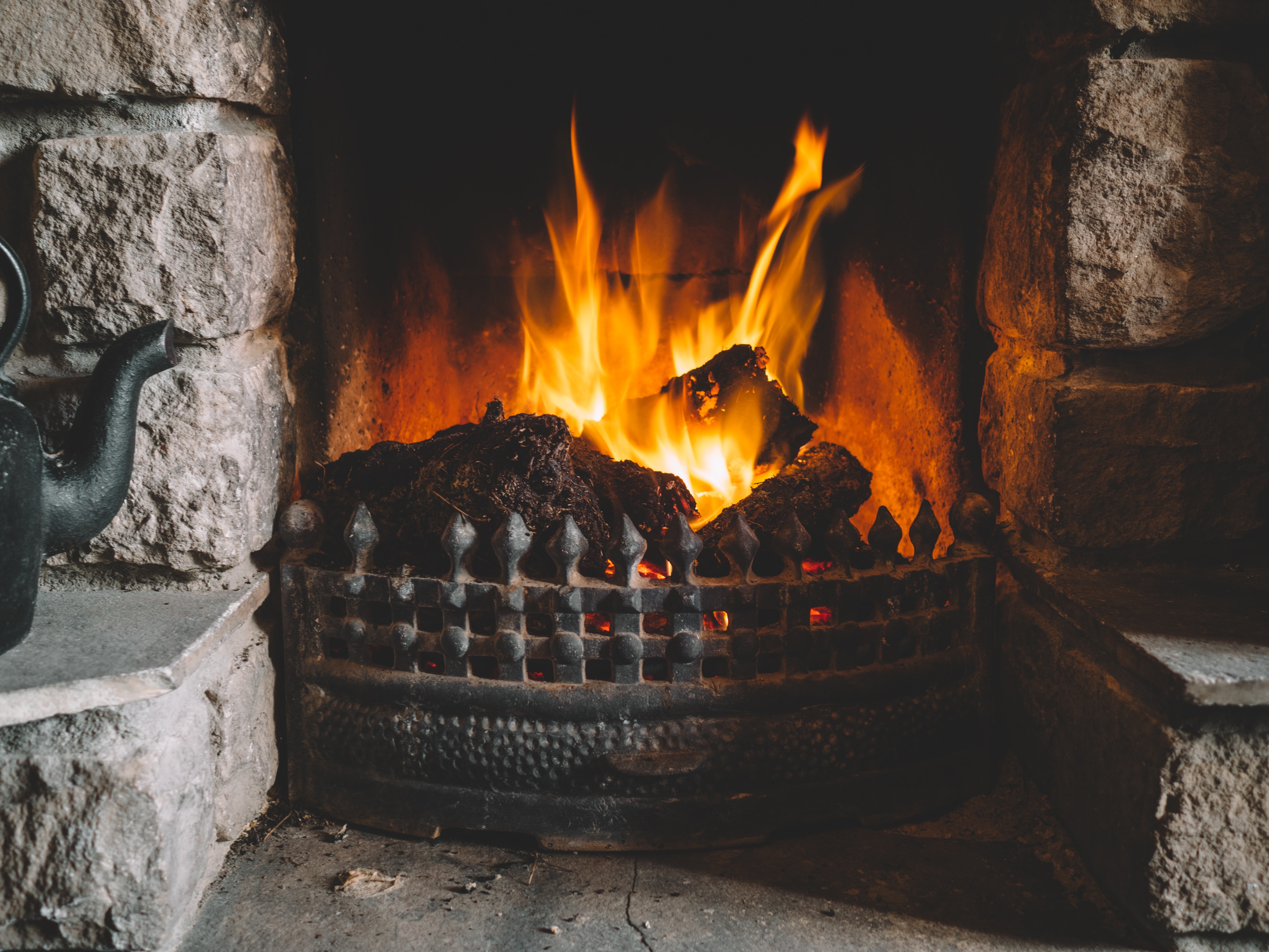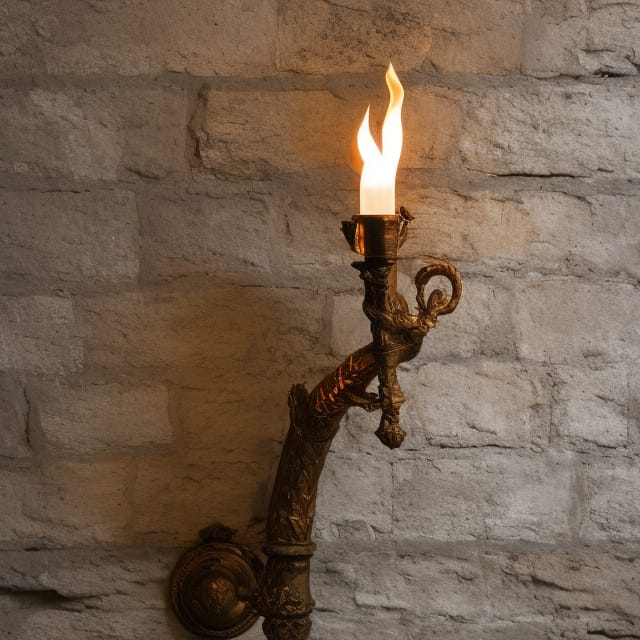artificial lighting
Scarterran lighting is based on research on historical real world lighting.
A torch is just a burning stick, but burning sticks don't last particularly long. If you just need a few minutes of light to get from the hearth fire to wherever you are sleeping, a burning stick is adequate and practically free.
A better torch is a stick wrapped in a rag soaked in some kind of flammable liquid, but not too flammable. A hand held torch can last about thirty minutes. This costs about a quarter of copper piece.
Most commoners might keep a torch in a sconce near the exit to their house. Castles and manner houses are likely to have several sconces like this for the same reason. Either way, if a resident hears an odd noise or otherwise needs to go outside for a brief time, they use a torch, but torches are not ideal for long term use and are a bit expensive, but they are okay for those who need light situationally, if not consistently..
If an alchemist made the torch, a hand held torch can last about three hours, but they cost about a copper piece making this pretty much the province of adventurers and mercenaries.
A long torch is usually at least five feet long and are usuallly planted in the ground. They aren't very portable, but they are good for providing lighting at a large gathering.
Torches of any stripe are generally too expensive and too messy to be a long term lighting source for day-to-day use. They are problematic indoors because they produce a lot of messy (and often hot) ash. They are also a fire hazard. In poorly ventilated small enclosed areas, torches can make an area unbreathable fairly fast.
Candles are the norm for day-to-day use. Rush candles are essentially rush branches soaked in animal fat. They provide decent light but only for about ten to fifteen minutes, but the materials they are made of are readily available and the construction process is simple, so even the poorest peasants can make them easily and it's not a huge problem for them to keep changing the rush candle when the old one goes out.
A tallow candle will last a fair bit longer than a rush candle but the light they produce is dimmer and they smell unpleasant. Tallow candles are not usually used to read by or do precision work, they are typically used to not trip over things in the dark.
Beeswax is worth anywhere between 8 and 10 silver pieces a pound. It is a little bit less valuable in areas where bees are common and it is a bit more valuable in areas where bees are less common. Most bees like wooded areas, so areas with limited trees usuallly have limited bees.
The Elven Empire is highly literate and thus burns through many candles to read by, but they don't have a lot of bee-friendly woodland, so there is a near constant stream of cargo ships bringing them wax.
Most lanterns are essentially a candle with a cover on it to refract the light and provide a shield against gusts of wind extinguishing the candle. Also, holding a lantern is less likely to spill hot wax than holding a candle directly. Lantern covers are usually thin greased animal skin, less commonly glass or paper. Because of the predominance alchemy in Scarterra. Glass is of a higher quality than the real world Earth glass of the middle ages though it's still not cheap.
An oil lamp is a wick in a pot with a handle. Sometimes the pot is metal, more often than not clay. Whether rendered from vegetable oil or an alchemists workshop, lanterns are fairly expensive, roughly on par with beeswax candles. Unsurprisingly, oil lamps are more popular in areas where bees are relatively scarce and fairly uncommon in areas where bees are relatively plentiful.
Most Scarterrans try to maximize use of the sun being active between dawn and dusk, but that still leaves an average of about three to four hours a day where a human doesn't require sleep and has no sunlight.
Most homes and workplaces have a hearthfire that is at least partially lit 24 hours a day. Most night time activity is congregating around the hearth.
Beeswax candles are the best, providing comparable light to a rush candle but lasting much longer and with fewer variations in brightness. Beeswax is not cheap, so beeswax candles are mostly the province of nobles and clergy. Arguably the clergy more than the secular nobility. It is very common for bishoprics to keep bees for their own use and as a source of income.





Comments